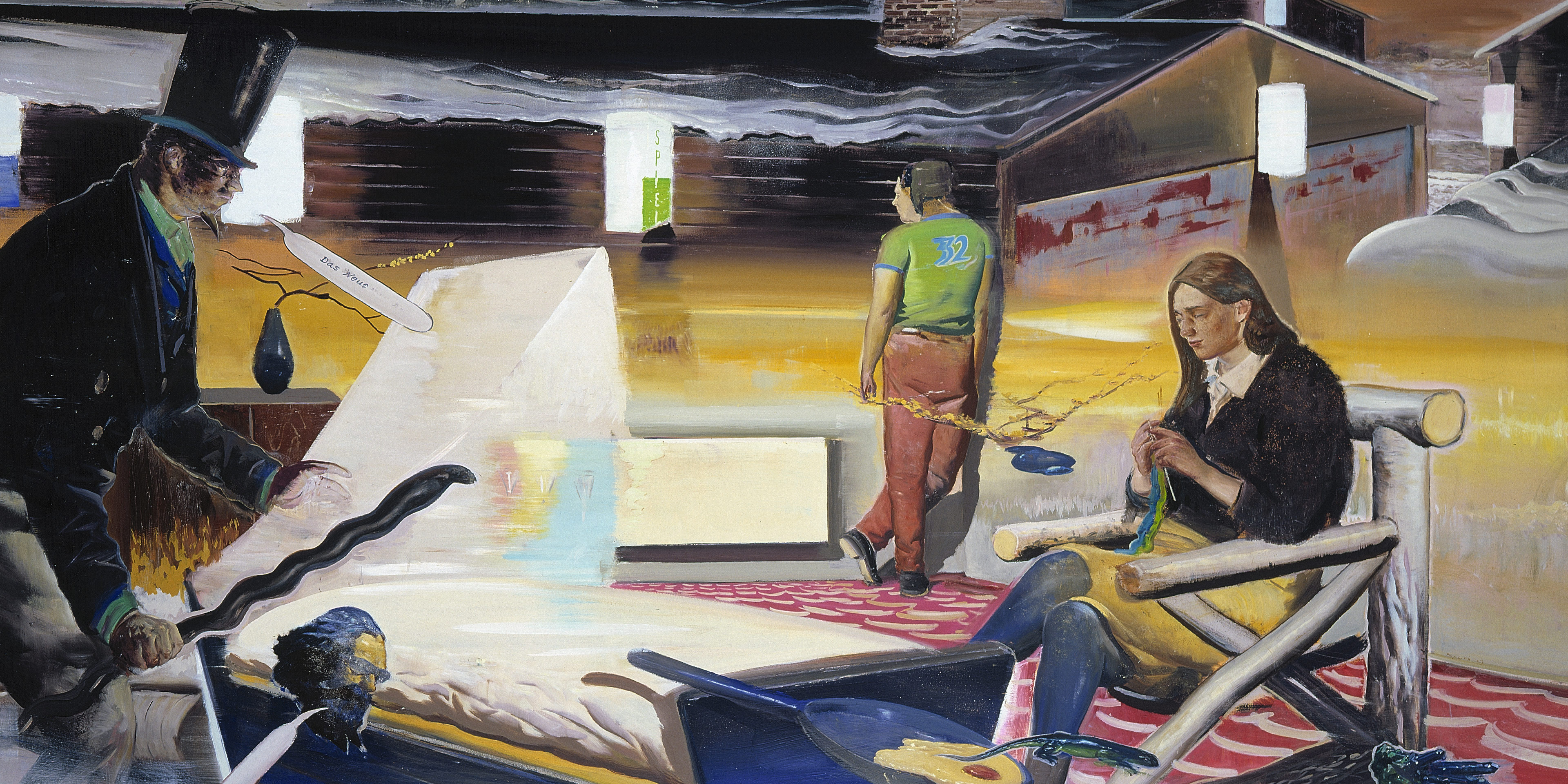Archive, Archive Exhibitions, Exhibition
- March 19, 2005 – February 28, 2006
- MASS MoCA
In December 2000, a group of five young German artists, all recent graduates of the prestigious Leipzig Art Academy, organized a small exhibition of their works in Leipzig. Unsurprisingly, the exhibition attracted no notice from the international contemporary art community. From that humble beginning, the “New Leipzig School” has expanded to a dozen artists and grown to be an international phenomenon — its painters making works that have museums and collectors in their thrall. On March 19, 2005, MASS MoCA presented the country’s foremost collection of paintings from the New Leipzig School—a collection built by the Rubell Family in Miami and presented in its entirety for the first time at MASS MoCA. The exhibition, titled Life After Death: New Leipzig Paintings from the Rubell Family Collection, included 62 works by Tilo Baumgartel, Tim Eitel, Martin Kobe, Neo Rauch, Christoph Ruckhäberle, David Schnell, and Matthias Weischer.
“This is a very exciting exhibition and a bit of a departure for MASS MoCA,” says director Joseph Thompson. “This marks the first time that our first-floor galleries will be filled exclusively with paintings. We are honored to be the first institution to exhibit this important collection in its entirety.”
These painters breathed new life into the East German tradition of social realist figure painting with enigmatic narratives and surrealist overtones. The New Leipzig School is the 21st century’s first bona fide artistic phenomenon. In addition to their affiliation with the Leipzig Art Academy, the New Leipzig School painters share stylistic concerns, which are shaped in part by the tradition of the school and East German social realism more generally. A strange surrealism and a discordant palette pervade their interiors, cityscapes, and landscapes, which are often populated by disaffected figures. A general feeling of world-weariness and ennui speaks to the East German political situation — these are depictions of places and people that are not prepared to integrate into the brand-new optimistic West. Unready to face the new, they are nostalgic for the old, but more from habit than any affection.
The Leipzig Academy, founded in 1764, is one of the oldest art schools in Germany. It is highly regarded for its tradition of figure painting, which, before the reunification of Germany in 1989/90, was bound to state-mandated “social-realist” painting. While academies in the West eschewed figurative painting, and sometimes painting itself, in favor of abstraction and work in new media, the Leipzig Academy produced some of East Germany’s most highly regarded figure painters.
The undeniable buzz that surrounds the New Leipzig School is due in part to the enthusiasm that collectors Mera and Don Rubell have shown for their work. Always bellwethers, the Rubells first visited the Leipzig gallery, Liga, these artists maintained between March 2002 and April 2004, in its inaugural year. They began acquiring their work immediately and have continued to support many of the artists.
Housed in a nondescript 45-000-square-foot Miami warehouse that once served as a Drug Enforcement Administration storage facility, the Rubell Family Art Collection features some of the edgiest and most important contemporary work of the last 40 years. The collection, which contains 6,000 pieces by celebrated artists including Keith Haring, Peter Halley, Damien Hirst, David Salle, and Cindy Sherman, is a representation of every major influence in contemporary art over the last three decades. It includes paintings, sculptures, drawings, photographs, installation, and videos. Minimalism, neo-expressionism, neo-geo, photography, and identity politics are the art movements best exemplified by the body of work the Rubells—father Don, mother Mera, and children Jennifer and Jason—have lovingly assembled by seeking out the small studios of emerging but undiscovered artists in the U.S., Europe, Africa, Asia, and Latin America.
The Rubells began collecting art with a $50 investment in a piece found during a European summer vacation in the 1960s. After that, they established a budget of 25% of their income for collecting original art. Today, the Rubell collection, almost invariably bought from the artists at the earliest stages of their careers, is celebrated in art circles around the world.
The exhibition is co-curated by Laura Heon, MASS MoCA’s curator, and Mark Coetzee, curator of the Rubell Family Collection. The exhibition was accompanied by an 80-page color catalog.
Neo Rauch, Das Neue, 2003
Oil on canvas
82 1/2 × 118 1/4″


